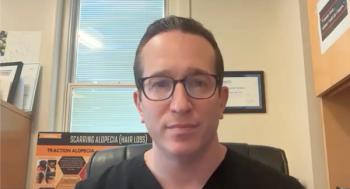
- Oncology NEWS International Vol 7 No 5
- Volume 7
- Issue 5
Growth of Hospice Movement Spurs Interest in Pain Care
SAN DIEGO--With the explosion of the hospice movement, the creation of pain management teams, and the use of pain ladders to guide treatment, "pain management is becoming a trendy area of medicine," said Daniel B. Carr, MD, Saltonstall Professor of Pain Research, New England Medical Center. "We didn’t hear much about treating cancer pain 20 years ago; it was on the fringes."
SAN DIEGO--With the explosion of the hospice movement, the creation of pain management teams, and the use of pain ladders to guide treatment, "pain management is becoming a trendy area of medicine," said Daniel B. Carr, MD, Saltonstall Professor of Pain Research, New England Medical Center. "We didnt hear much about treating cancer pain 20 years ago; it was on the fringes."
But, Dr. Carr said, the medical community still has a long way to go to ensure that all cancer patients with pain are kept comfortable. And the challenge will be even more daunting as the baby boomers age and begin to succumb to terminal diseases.
Speaking at an educational course sponsored by the American Academy of Pain Medicine, Dr. Carr reviewed some of the methods clinicians can use to keep their oncology patients pain free.
One common mistake physicians make when assessing pain is assuming that the pain is being caused by the cancer itself. "Keep an open mind; dont jump to the conclusion that if its cancer, the pain is due to cancer," he said.
Use of the World Health Organizations pain ladder can relieve pain in 90% of terminal cancer patients, he said. Some physicians, however, mistakenly believe that they should start at the bottom of the ladder when tackling moderate-to-severe pain. Instead, clinicians may need to begin on the second or third rung of the ladder when pain is advanced beyond the mild-to-moderate stage.
Morphine is the most commonly used opioid for moderate-to-severe pain, he said, due to its availability in a wide variety of dosage forms, well-characterized pharmacokinetics and pharmacody-namics, and relatively low cost. For use in meeting baseline analgesic needs that are stable, Dr. Carr said, controlled-release morphine tablets are useful, as are transdermal fentanyl patches (Duragesic).
He also noted that meperidine may help for a few days to treat acute pain, but generally should be avoided in cancer patients for two reasons: First, it has a toxic metabolite--normeperidine--that accumulates with continued use, particularly when renal function is impaired, causing dysphoria, agitation, or seizures. Second, meperidines duration of action is short--2.5 to 3.5 hours.
Of course, opioids are not always going to work, Dr. Carr said, but it makes sense to try, sequentially, more than one opioid before opting for an anesthetic, neurosurgical, or other invasive approach to relieving stubborn pain. For example, a patient who experiences nausea or mental clouding while on oral morphine, may do just fine with hydromorphone or fentanyl, he said.
Dr. Carr also talked about the more involved approaches to pain control, including spinal opioid therapy. The site, nature, and stage of the underlying condition; the type of pain; and the life expectancy of the patient need to be considered before deciding whether to start this kind of treatment.
Neuropathic pain is, in general, resistant to opioids no matter how they are delivered, as is movement-related pain. However, deep constant somatic pain is usually more responsive.
Because responses to spinal opioids vary greatly, it is always better to carry out a trial through a standard percutaneous catheter before embarking on more invasive implantation of an epidural or intrathecal system for long-term therapy. For patients who are near death, a percutaneous temporary spinal catheter may be all that is needed, he noted.
Dr. Carr also referred to clinical trials that have explored whether opioid epidurals offer advantages over systemic infusion. Unfortunately, he noted, many of the long-term studies of treatment with spinal opioids are not as informative as they might have been. For instance, in 13 of 18 long-term studies of spinal opioid use reviewed by one researcher, physicians had used morphine alone. And yet typically today, clinicians choose morphine plus a local anesthetic or clonidine.
Another effort to combine data from multiple trials of neuraxial opioid delivery--published by Dr. Carr and his colleagues in 1996--was frustrated by the many different drug regimens used in the studies and the paucity of detailed information about patient characteristics and analgesic responses. But Dr. Carr was able to reach some conclusions after pooling data into "crude" categories of analgesic efficacy and complication rates.
The results showed that the analgesic success rate was about the same (70%) whether the drugs were delivered by the epidural, intrathecal, or intracerebroven-tricular route. Catheter and system problems, such as pump failure, leakage, or infection, were greatest in the epidural group and significantly lower during intracerebroventricular therapy.
Although this last technique is promising, he noted, it requires surgery and is not suited to preimplantation therapeutic trials. And it cannot be recommended at this point for drug mixtures such as opioid plus local anesthetic or clonidine.
Finally, Dr. Carr offered a simple mnemonic--ABCDE--to keep in mind when treating cancer pain (see Table).
Articles in this issue
over 27 years ago
Risk Assessment: Who Should Have BRCA Gene Testingover 27 years ago
Panel Supports Approval of Label Expansion for Ceprate SC Systemover 27 years ago
NCI Office Focuses on Minority Accrual in Cancer Clinical Trialsover 27 years ago
Increased Folate Level Appears to Lower Colon Cancer Riskover 27 years ago
Cluster of Risk Factors May Predict Increased Risk of Colon Cancerover 27 years ago
Colon Cancer Prevention Fits Into Healthy Lifestyleover 27 years ago
When to ‘Walk Away’ from a Managed Care Contractover 27 years ago
Nutritional Assessment ‘Vital,’ but Still Difficult to Doover 27 years ago
Prevention Research Needs to ‘Go Mainstream’over 27 years ago
Hyperthermia May Stimulate Immune SystemNewsletter
Stay up to date on recent advances in the multidisciplinary approach to cancer.


















































































